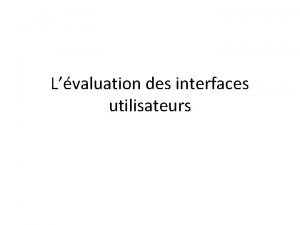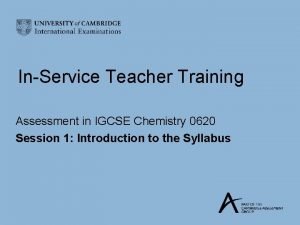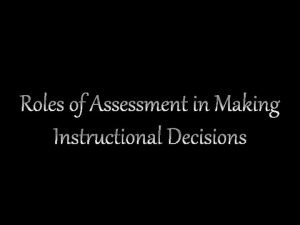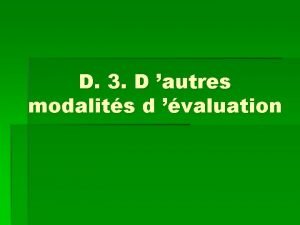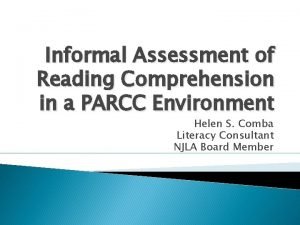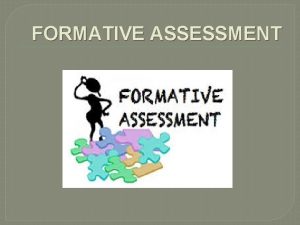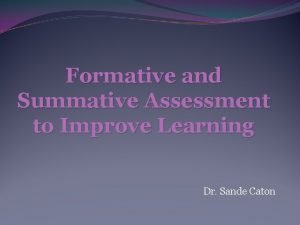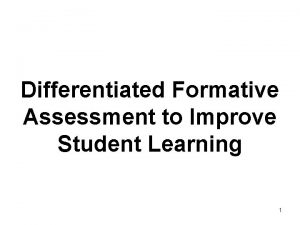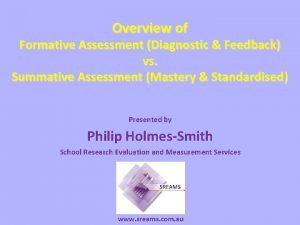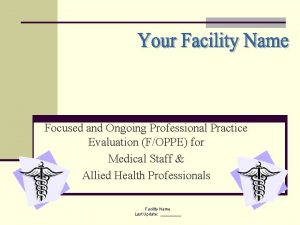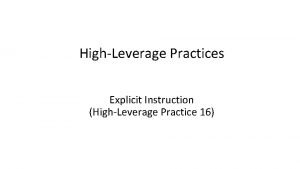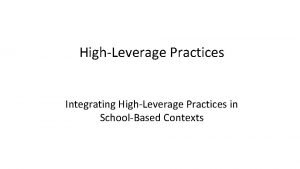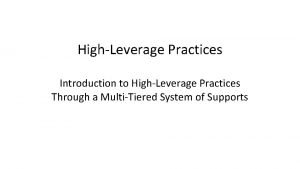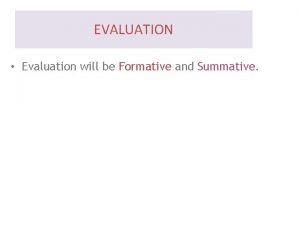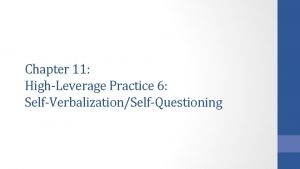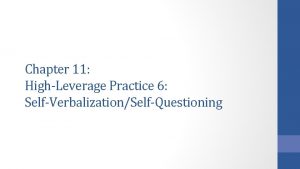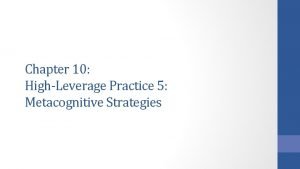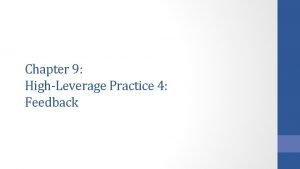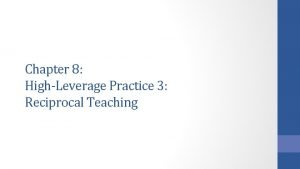Chapter 6 HighLeverage Practice 1 Formative Evaluation Formative












- Slides: 12

Chapter 6: High-Leverage Practice 1: Formative Evaluation

Formative Evaluation: What is it? • Ongoing collection and use of information to evaluate effectiveness of instructional implementations, and • to determine whether instructional adaptations are necessary https: //www. youtube. com/watch? v=--EXLn. XORIU

Formative Evaluation: What is it? • Can be contrasted with summative evaluation: • Summative - Information is gathered to judge student outcomes • Formative – information is gathered to evaluate and modify instruction http: //youtu. be/jr. SWh. H 5 f. Cj 8

Formative Evaluation: For Whom is it Intended? • Students of all ages and in a wide range of content areas and curricula • Useful in evaluating effectiveness of curricular innovations https: //www. youtube. com/watch? v=z. Ramb 5 j 37 b. Q

Formative Evaluation: How Does it Work? 1. Specific subskill mastery measurement (mastery measurement) • Task-analytic approach in which a competency is broken down into subskills that are arranged in a hierarchical order 2. General Outcome measurement 1. Focuses on global outcomes or desired terminal behaviors 2. Progress assessed by repeatedly sampling performance on probes that represent global outcome or desired terminal behavior

Formative Evaluation: How Does it Work? • Four prominent, specific approaches: 1. Curriculum-based assessment (CBA) 2. Curriculum-based measurement (CBM) 3. Portfolio assessment 4. Performance assessment

Formative Evaluation: How Does it Work? • CBA • Observation and recording of student performance in a local curriculum to gather information to make instructional decisions • Clearest example is a mastery measurement approach to assessment • Teacher designs test material on the basis of a task analysis • Students are pretested before instruction to determine which skills have not yet been mastered • These subskills form the core of the curriculum • As instruction occurs, students repeatedly measured on selected subskills using alternative test forms

Formative Evaluation: How Does it Work? • CBM • A progress monitoring system in which student performance is measured repeatedly (e. g. once or twice per week) with test materials that represent an entire curricular domain rather than sub-components of the domain • Clearest example is a general outcome measurement approach • Progress is assessed in a continuous way throughout an instructional program or academic year using measures that are valid and reliable indicators of student performance • Teachers examine rate of student improvement to determine instructional effectiveness

Formative Evaluation: How Does it Work? • Portfolio and Performance assessment • Portfolio assessment –collection of student work demonstrating what a student has done and, by inference, what a student can do • Performance evaluated on basis of an ongoing collection of student works judged by the teacher to be important indicators of outcomes of learning activities • Performance assessment – emphasizes use of a direct measure of student performance in real or simulated situations • Frequency of portfolio collection and how they are collected is determined by the teacher

Formative Evaluation: Adequacy of the Research Knowledge Base • Two components contribute to its effectiveness in promoting student achievement 1. Creating Rules for Data use 1. Result in greater gains 2. Graphing 1. Leads to greater student achievement gains

Formative Evaluation: How Practical is it? • Requirements • extra time and effort on the part of the teacher • ongoing data collection • some development of measurement materials and procedures • All but CBM require considerable amount of on-site resource development • Portfolio and performance require identification of desired long-range goals and tasks that reflect performance on those goals

Formative Evaluation: How Practical is it? • CBA requires development of a hierarchy of skills and measures to assess those skills • CBM requires: • Teacher development of alternative assessment probes representative of the desired general outcome • Teachers must graph student progress and use it to make instructional decisions
 What is summative evaluation in hci
What is summative evaluation in hci Igcse teacher training
Igcse teacher training Diagnostic formative and summative assessment
Diagnostic formative and summative assessment évaluation normative
évaluation normative Modalits
Modalits What is summative assessment
What is summative assessment Formative feedback ideas
Formative feedback ideas What is formative assessment
What is formative assessment Characteristics of formative evaluation
Characteristics of formative evaluation What is diagnostic assessment in teaching
What is diagnostic assessment in teaching Focused professional practice evaluation
Focused professional practice evaluation Myeplg website
Myeplg website Chapter 3 sensory evaluation the human factor answer key
Chapter 3 sensory evaluation the human factor answer key
